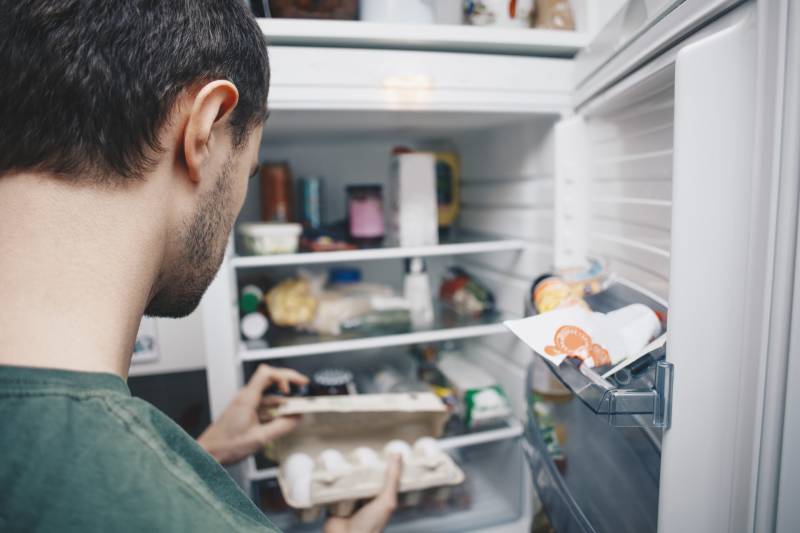- Jump straight to: How to get reimbursed after a power outage
This recent run of storms in the Bay Area has brought high winds and downed trees — which has meant a lot of power outages for people across the region.
One big way that losing power can affect you, your household and your finances: When your fridge and your freezer shut down for an extended period, much of your fresh food ends up spoiled and unsafe to eat. Food safety guidelines from the U.S. Department of Agriculture explicitly state that a refrigerator without power will only keep food safe to eat for up to four hours during a power outage, and that after that you should “discard refrigerated perishable food,” specifically meat, poultry, fish, eggs and leftovers.
At a time when food costs keep rising and food benefits are about to drop, losing a fridge or freezer’s worth of food can mean a serious loss for a home that’s trying to make every dollar stretch. If this happened to you, you’re by no means alone, says Mark Toney, executive director of The Utility Reform Network (TURN).
“We’ve heard a lot of complaints from people who, because of these storms, because the electricity lines have been brought down by trees, that absolutely — they were without power for a day, two days, and lost everything in their refrigerator,” said Toney. “What’s hard is … [holding] the utility company responsible for some of these weather events.”
But the good news is, there are avenues available to potentially claim back the costs of food you lost due to a shutoff.
The not-so-good news: These routes aren’t always simple or guaranteed to work. But they do exist, so keep reading for what you should know about trying to claim compensation for spoiled food.
What you need to know about claiming the costs of spoiled food
You can try to clam compensation from two sources:
- PG&E, your utility provider; or,
- Your insurance provider, if you have one.
For claiming compensation, it matters what kind of outage you were affected by — that is:
- What caused the outage: whether it was a weather event, like a storm, or a mistake by PG&E; and,
- How long the outage was.
In any case, seeking compensation from either PG&E or your insurance provider may prove time-consuming and potentially confusing, and isn’t necessarily guaranteed to result in a payment. But this doesn’t mean you shouldn’t try. Keep reading for the details.
How to claim compensation directly from PG&E
PG&E generally has two routes for getting compensated for lost food during an outage: the company’s regular claims process, and their Safety Net program, which automatically provides Storm Inconvenience Payments. The process you choose depends on what caused your outage and how long you were without power.
Seeking compensation through Storm Inconvenience Payments from PG&E’s Safety Net program
According to PG&E, the Safety Net program is intended to compensate customers who experience outages caused by weather, through an automatic Storm Inconvenience Payment — but the outage must have lasted 48 hours or more.
How it’s meant to work: PG&E says that if your household is affected by a power outage that lasts for two days or longer, its Safety Net program will pay “$25 to $100 automatically 60 to 120 days after the outage.”

